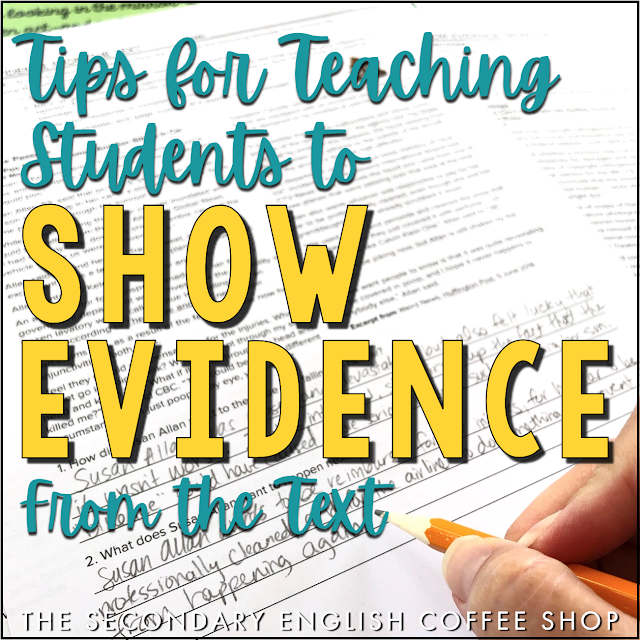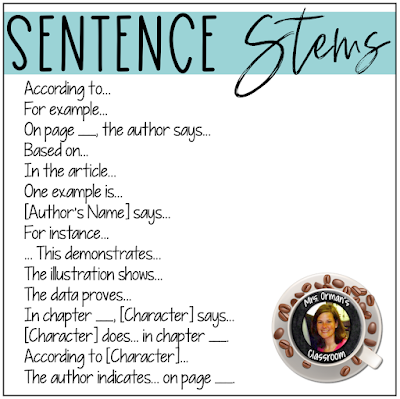Tips for Teaching Students to Show Evidence From the Text
By Tracee Orman
Do your students struggle with showing evidence from the text while responding to questions?
Even though this skill is introduced in elementary (the first reading anchor standard in the Common Core State Standards (CCSS) requires students to read the text closely, make logical inferences, and cite textual evidence to support those conclusions), it is still a skill that needs to be reinforced and practiced each year in secondary school.
Of course, before you teach it, it’s important to let students know why it’s such an essential critical-thinking skill. We are preparing students for the real world in secondary education. And in the real world, future employers, future clients, future partners are all going to require “evidence” to support a conclusion. Practicing this skill will help develop their ability to question information, decipher fact from opinion, draw conclusions, and cite evidence.
But this skill doesn’t need to be practiced solely in a research unit. You can have your students practice it often while reading a novel, short story, or short nonfiction article. Here are some tips:
• Be consistent in asking for evidence from the text with your text-based questions. Students will only respond with text evidence if you demand it every time.
• Think quality over quantity for questions. Are you just asking a number of questions to assign busy work or do you truly want students to practice a higher-level skill when answering a question? It’s perfectly OK to only have one, two, or maybe three questions maximum for follow-up after a chapter in a book or an article. If your questions do not require students to read the text closely, are they really necessary?
• Require evidence even in opinion-based questions. It’s great for students to have opinions about things happening in the text–that’s what helps them make connections. But remember to still require evidence from the text when they share their opinion.
• Use sentence stems. I always like to post sentence stems (or sentence starters) for students while they are reading and responding to the text. It definitely helps students who are struggling to begin and/or complete their responses.
• Model sample responses. In addition to sentence stems, students need examples so they know what your expectations are. If you are comfortable using a strategy such as ACE, RACE, or RACES (restate the question, answer the question, cite the source, explain your response, summarize your answer), then by all means use it. I personally don’t use RACE or RACES in high school; instead, I allow students to simply answer the question, then support it with evidence from the text. I find this to be easier when transitioning to research writing to avoid wordiness, but you should use whatever works best for you and your students.
If you need fun nonfiction articles to practice this skill with students, you can download this FREE Show Evidence from the Text resource. If you want additional practice passages that can also be used in Google Classroom or other online platforms, you can download the full version HERE.
For additional resources and help, check out these blog posts from Room 213:
Teaching Research Skills: Active Learning
Teaching the Process of Literary Analysis
Thanks for reading!




















